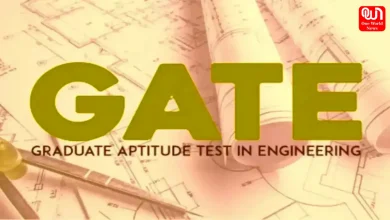How has the Union Budget 2023 addressed Education?

Did the Union Budget 2023 address Education Needs?
Union Budge 2023 addressed Education needs, but some aspects are still missing. Let’s find out more on how Budget 2023 tackled the Education sector. How much funds were allocated to Education in 2023 Budget? The Union Budget of India for 2023, presented on February 1st, 2023 by the Finance Minister, allocated significant resources towards the education sector with a focus on enhancing the quality and accessibility of education for all.
The total funds allocated to Ministry of Education is INR 1,12,898.97 crores, an increase of around 8.3% from the budget of last year. This allocation falls way short of the 6% of GDP target that was set in the National Education Policy (NEP).
Read more- Budget 2023: Know the key features of the first budget of ‘Amrit Kaal’
So, what are the important aspects of Education that the budget has touched upon?
1. Establishment of National Digital Library- A digital library will be set up for children and adolescents that will help them gain access to books on various topics. This will be done across the country and will cater to all grades, levels, languages and device-agnostic accessibility.
2. Recognizing that children in villages might not have access to the digital infrastructure, States will be encouraged to set up physical libraries at Panchayat and ward levels.
3. The Government has increased the allocation made to Navodaya Vidyalaya Samiti (NVS) from 4920.30 to 5486.50 crores. NVS was established in 1986 and is an autonomous organization under the Ministry of Education. They are responsible for managing a network of Jawahar Navodaya Vidyalayas (JNVs). JNVs are a unique and highly regarded system of alternate schools for talented rural children in India, providing quality education to students from economically and socially challenged backgrounds.
4. A new Centrally Sponsored Scheme New India Literacy Programme (NILP) has also been established and given a fund allocation of 157 crores. The scheme has taken into consideration the recommendations of NEP 2020 on Adult Education and Lifelong Learning.
5. Recognizing the growing need of technology and integrating this into the higher education system, the government has also said that three Artificial Intelligence Centres of Excellence (CoE) will be established in top educational institutions.
6. The Interest Subsidy and contribution for Guarantee Funds has been merged with PM Uchchatar Shiksha Protsahan (PM-USP) Yojna from this year onwards. The PM-USP Yojana is a scheme for financial assistance for meritorious students belonging to poor financial background.
7. The Budget also allocated 1500 crores to establishing 10 World Class Institutions each in public and private sector that will have global standards in teaching and research.
8. Grants give to Indian Institute of Technology (IITs), the premier institute in India has also been increased from rs.8245 crores to rs.8791.50 crores.
Which schemes have not made the cut?
Read more- What has the Budget 2023 Failed to Address?
1. ASPIRE (Accelerating State Education Program to Improve Results), a project assisted by Asian Development Bank (ADB) has not been allocated any funds. The project was responsible for implementing Samagra Shikhsa in states of Assam, Gujarat, Jharkhand, Tamil Nadu and Uttarakhand.
2. National Award to Teachers was instituted in 1958 to recognize teachers who were doing exemplary work in primary, middle and secondary schools. These teachers were awarded on 5th September by the President. Sadly, this has seen no fund allocation this year. Why should we focus more on education?
If India is looking to compete with global standards of education as well as improve grassroots education and literacy, there needs to be more fund allocation to Education. Not just funds allocation, but a better system and plan needs to be created. There is no dearth of policies and schemes by the government to improved education, but the real issue is the implementation of these schemes.
Students from rural area still fail to complete basic literacy and mathematical tasks, showing that the system is in dire state. Only when we implement better at grassroots level can we expect to grow more.
Liked this post?
Register at One World News to never miss out on videos, celeb interviews, and best reads.







